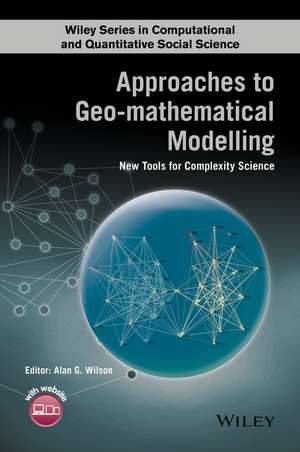Approaches to Geo–mathematical Modelling – New Tools for Complexity Science: Wiley Series in Computational and Quantitative Social Science
Autor A. Wilsonen Limba Engleză Hardback – 29 sep 2016
Preț: 513.32 lei
Preț vechi: 729.55 lei
-30% Nou
98.25€ • 106.76$ • 82.59£
Carte indisponibilă temporar
Specificații
ISBN-10: 1118922271
Pagini: 432
Dimensiuni: 176 x 244 x 24 mm
Greutate: 0.98 kg
Editura: Wiley
Seria Wiley Series in Computational and Quantitative Social Science
Locul publicării:Chichester, United Kingdom
Public țintă
Mathematicians and policy makers as well as advanced undergraduates and postgraduates in applied mathematics, geography, economics, and interdisciplinary fields such as regional science and complexity science. GR P & R Tier 2Cuprins
Notă biografică
Alan Geoffrey Wilson, Centre for Advanced Spatial Analysis, University College London, UK. His research interests have been concerned with many aspects of mathematical modelling and the use of models in planning in relation to all aspects of cities and regions - including demography, economic input-output modelling, transport and locational structures. He was responsible for the introduction of a number of model building techniques which are now in common use internationally. These models have been widely used in areas such as transport planning. He made important contributions through the rigorous deployment of accounts' concepts in demography and economic modelling. In recent years he has been particularly concerned with applications of dynamical systems theory in relation to the task of modelling the evolution of urban structure, initially described in Catastrophe theory and bifurcation: applications to urban and regional systems. His current research, supported by ESRC and EPSRC grants of around ?3M, is on the evolution of cities and the dynamics of global trade and migration.












